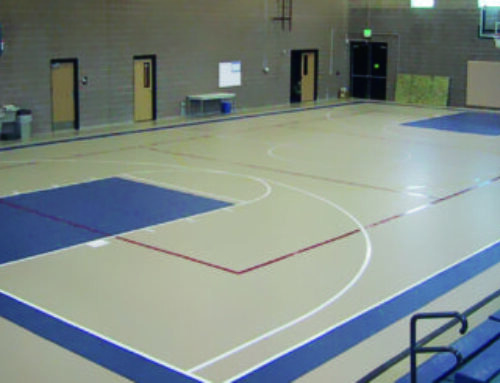The New Jersey Education Association, New Jersey Work Environment Council (WEC) and Healthy Schools Now coalition recently released a report Health and Safety Guide: Mercury Hazard in Schools from Rubber-Like Polyurethane Floors. Written by WEC’s industrial hygiene consultants, the report alerts school officials and maintenance staff of the potential health risk of rubber-like polyurethane floors and recommends actions to reduce or eliminate resulting mercury exposure.
Rubber-like polyurethane floors using 1,000 to 2,000 parts per million of phenyl mercuric acetate (PMA) catalyst have been installed in school multipurpose rooms, gyms, cafeterias, auditoriums, stages and indoor and outdoor tracks since the 1960s. PMA breaks down and releases odorless, colorless mercury vapor at room temperatures. The floors and items that have been in contact with them emit mercury vapor indefinitely. Exposure is worse if floors are damaged or deteriorated, in hot rooms with poor ventilation or without air conditioning, or if outdoor air is not being pulled in.
If floor removal is not going to take place in the near future, measures to limit mercury exposure should be implemented immediately. At a minimum, these measures should include ensuring that rooms with rubber-like polyurethane floors have cool temperatures, good ventilation and ongoing air sampling. Additional preventative measures include: ensuring proper floor maintenance and good housekeeping, including wet wiping, mopping, and microfiber mopping.
To learn more about this public safety hazard, please click here to view a fact sheet on the mercury flooring.
